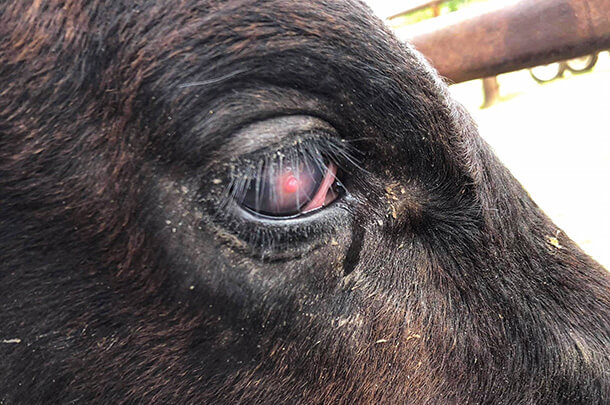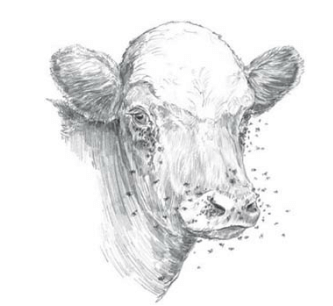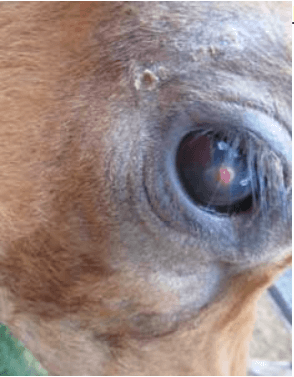
By: Drh Yayuk Kholifah
Functional: (First Veterinary Medic)
Cattle are animals susceptible to several eye diseases, both due to injuries and the entry of disease-causing microorganisms. Prompt care of eye injuries or diseases in cattle is essential to prevent blindness. One of the common eye diseases affecting cattle is Pinkeye.
Pinkeye disease in cattle can lead to losses for farmers as it can cause weight loss, treatment expenses, and decreased cattle value due to impaired vision or blindness. If an animal contracts this disease, immediate treatment should be administered to the affected animal, and preventive measures should be taken to protect other cattle from infection. Pinkeye is caused by the bacteria Moraxella bovis, which usually damages the cornea of the cow's eye. Dust, flies, viruses, or foreign objects that irritate the eyes make the cornea susceptible to bacterial attack. Flies that often land on the face (face flies) act as carriers and transmission agents of pinkeye disease in a population of livestock, especially in warm weather. The pinkeye bacteria gain entry through corneal wounds created by these flies' mouthparts. These flies injure the animal's eye to induce tearing, as they feed on the protein-rich eye fluids.
Stages of pinkeye disease progression:
- After irritation, the cow's eye becomes watery and frequently closed, becoming more sensitive to light. One or two days later, small white spots will appear on the cornea.
- Subsequently, the condition worsens; the white spots grow larger and ulceration occurs.
- Deeper and larger ulcers on the eye lead to the cornea bulging due to the accumulation of pus.
- The eye can rupture due to severe infection or if a blind animal collides with something.
- Pinkeye cases often result in corneal scars that can cause partial or complete blindness in infected cattle.
- The affected eye may heal after a few weeks, leaving a scar on the eye; however, in severe cases without treatment, permanent eye damage can occur.
Early-stage pinkeye disease should be treated promptly as it is more responsive to treatment. Treatment measures may include the use of antibiotics to combat the infection, protecting the eye from direct sunlight, dust, flies, or other irritants during the healing period. Topical treatment (directly on the eye) such as ointments, eye drops, or sprays should be administered twice a day for effectiveness, as they are usually quickly washed away by tears.
If you find cattle affected by pinkeye, it indicates that cleanliness in the barn needs to be improved to minimize disturbances from face flies that frequently bother the animals. Spraying with fly repellents and creating smoky areas around the barn at certain times can help repel face flies. By doing so, the spread of the disease to other animals can be promptly prevented.


References:
H.S. Thomas and B. Black; 2009; Storey's Guide to Raising Beef Cattle; Storey Publishing; Versa Press; United States
Image source: https://www.motherearthnews.com/homesteading-and-livestock/pink-eye-cattle-zbcz1308
H.S Thomas; 2009; The cattle health handbook; Storey Publishing; Versa Press; United States



